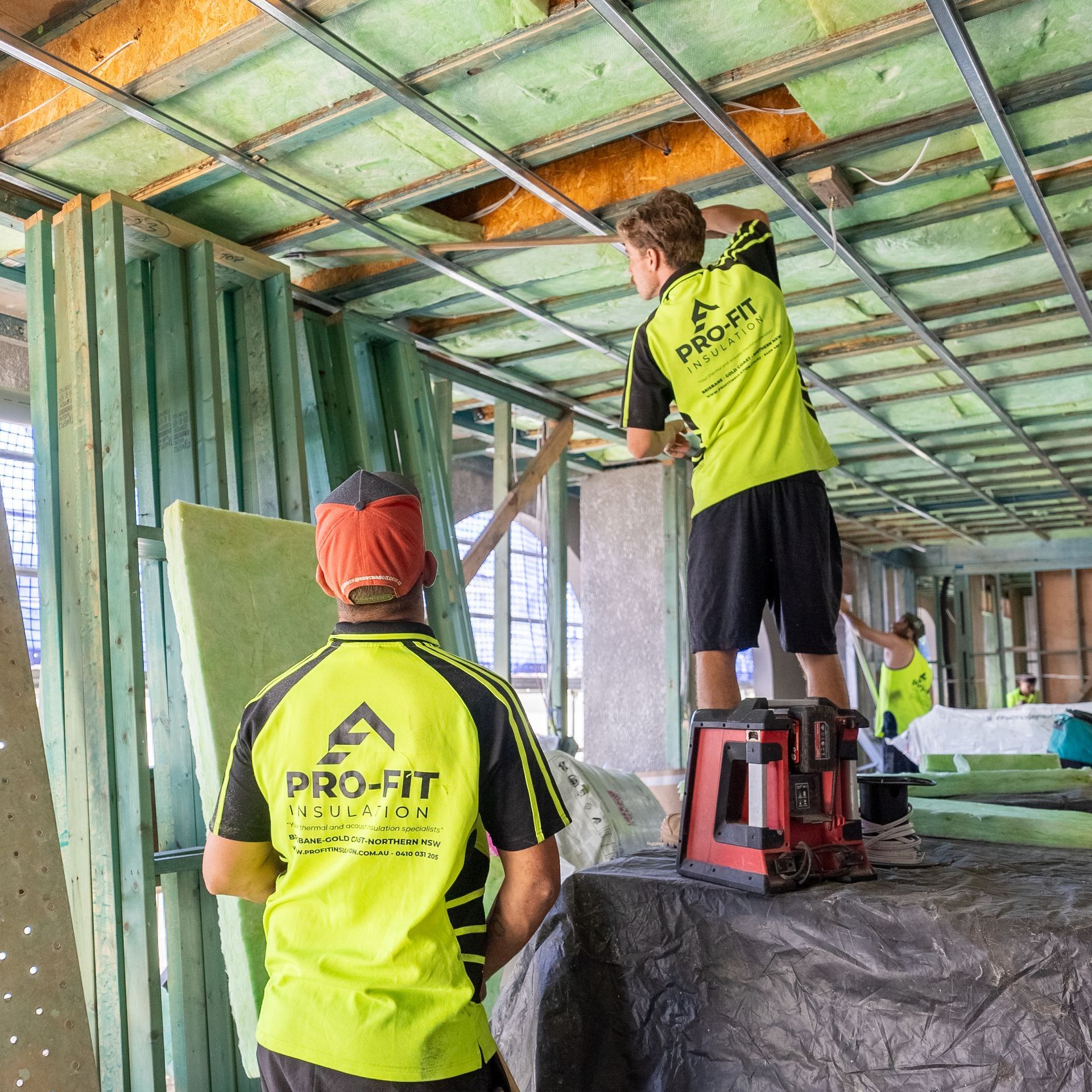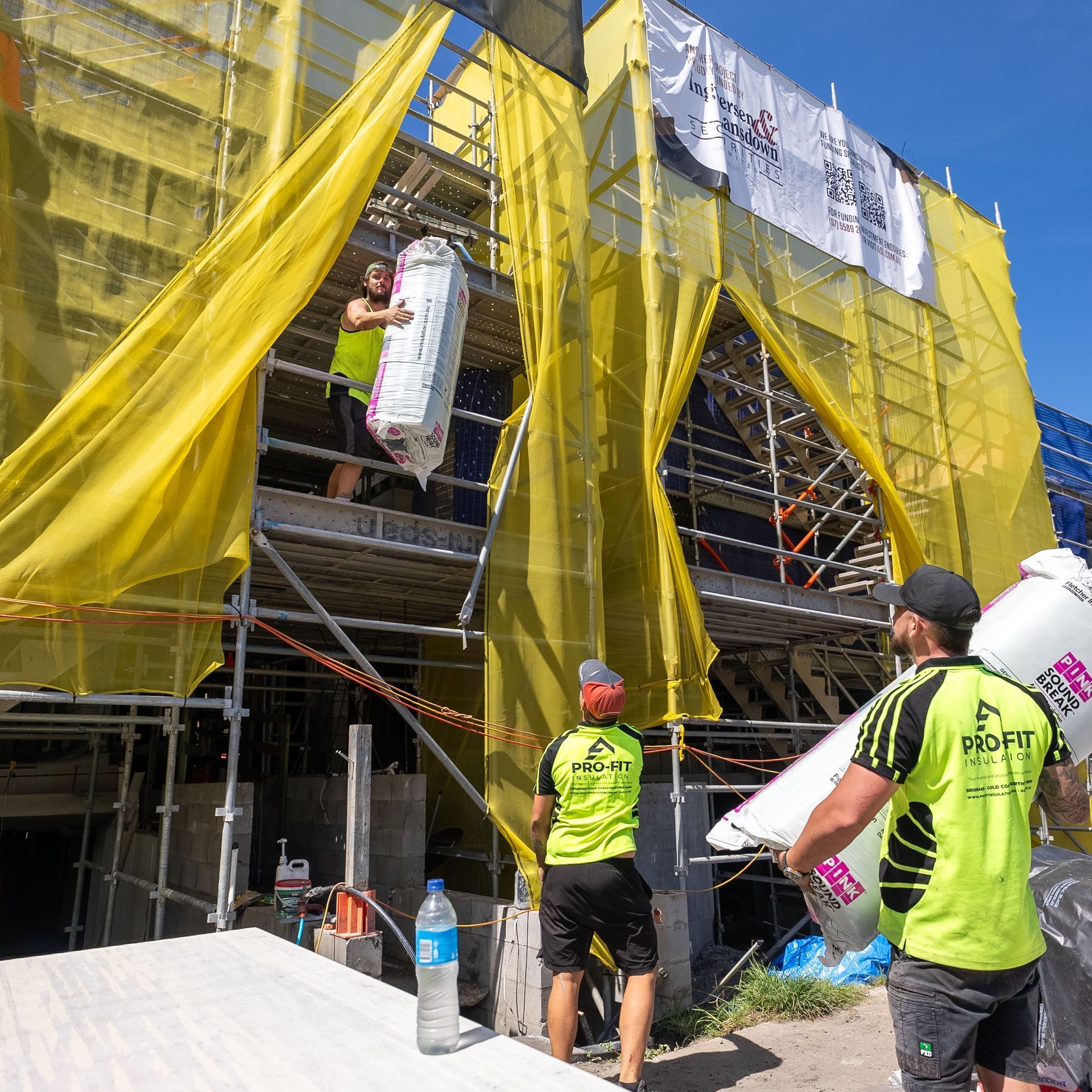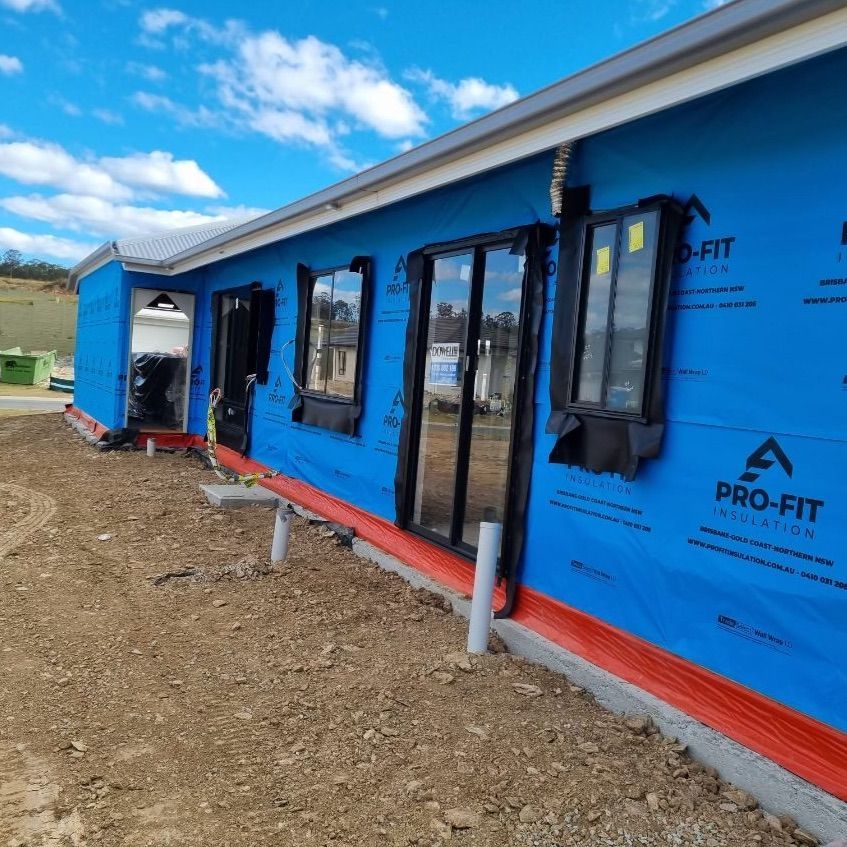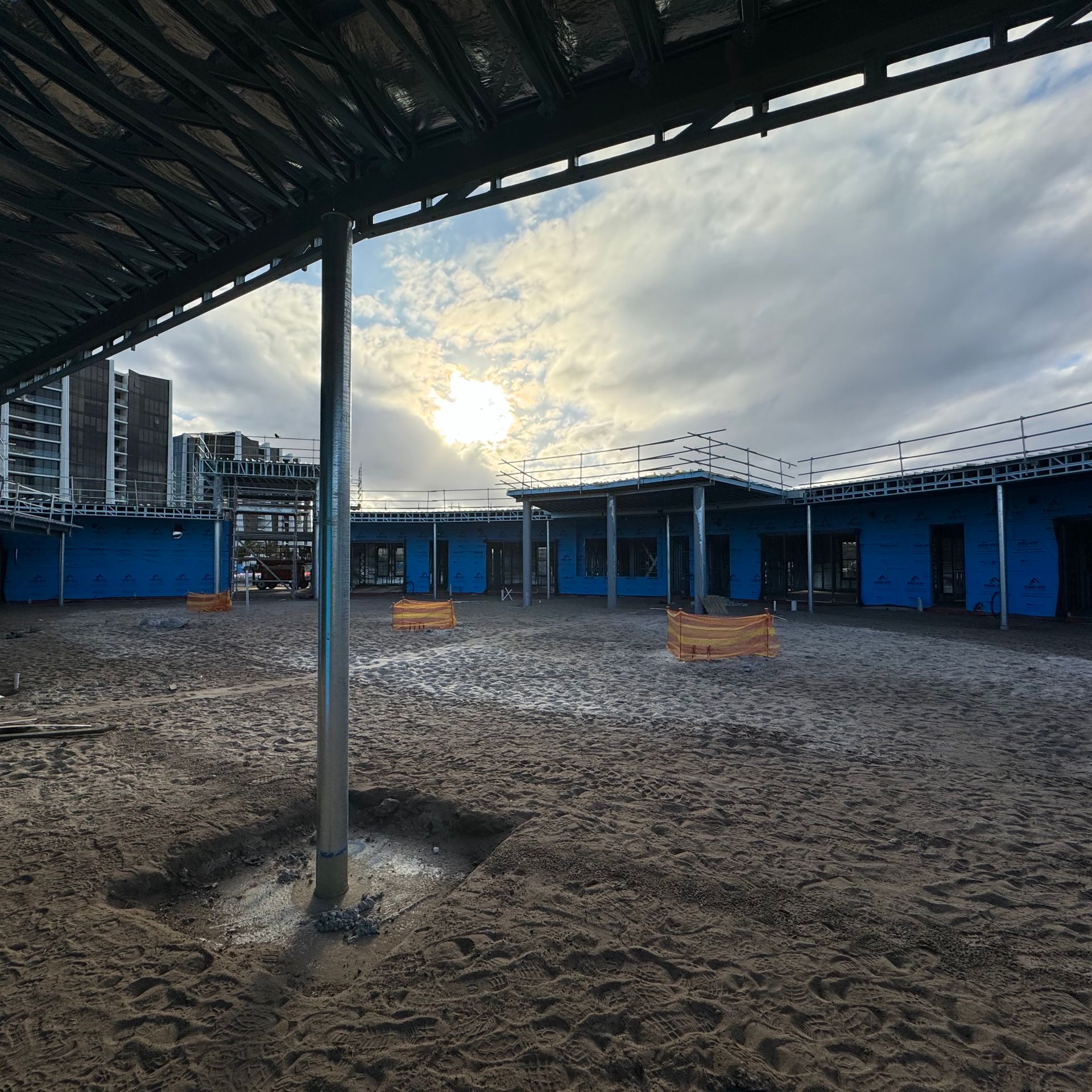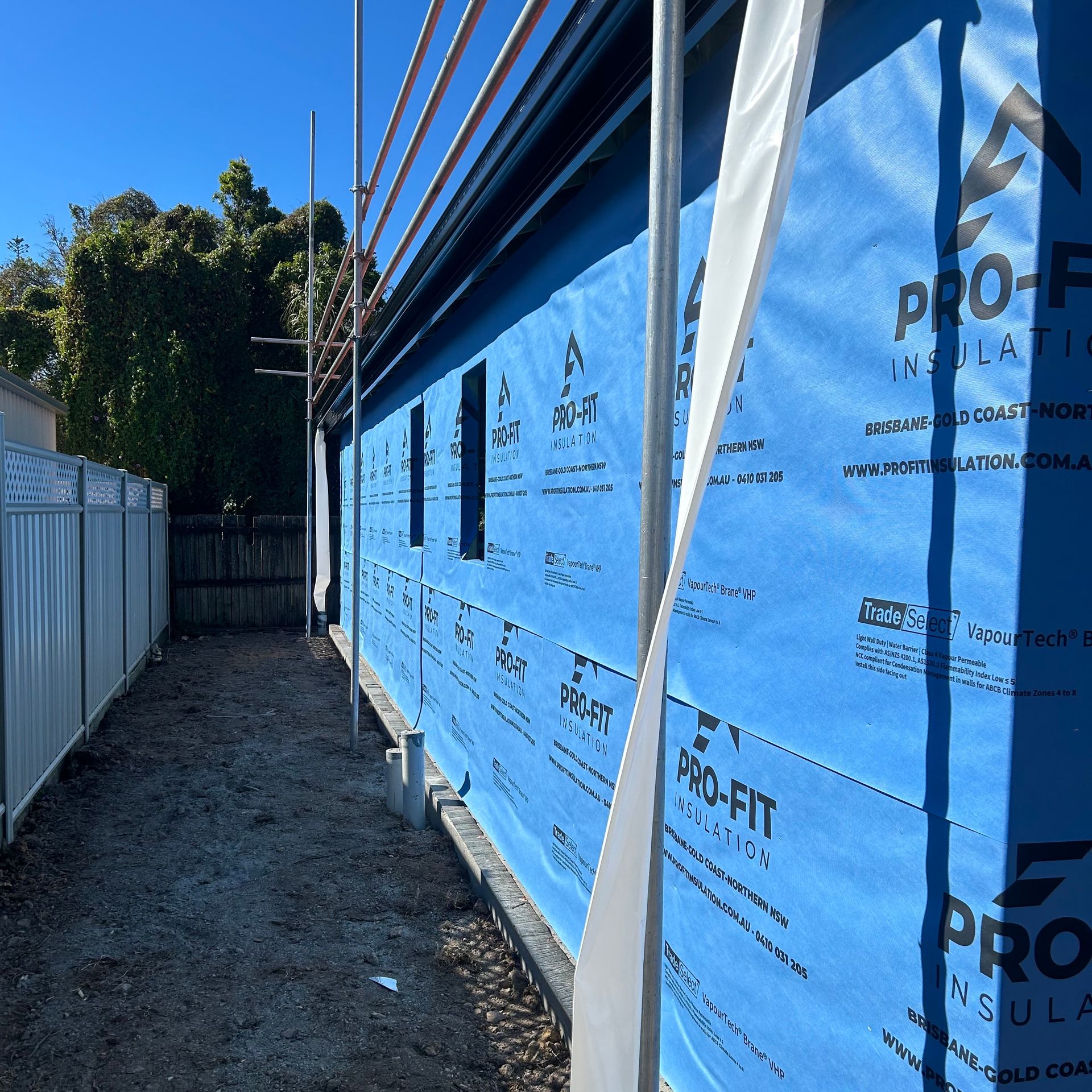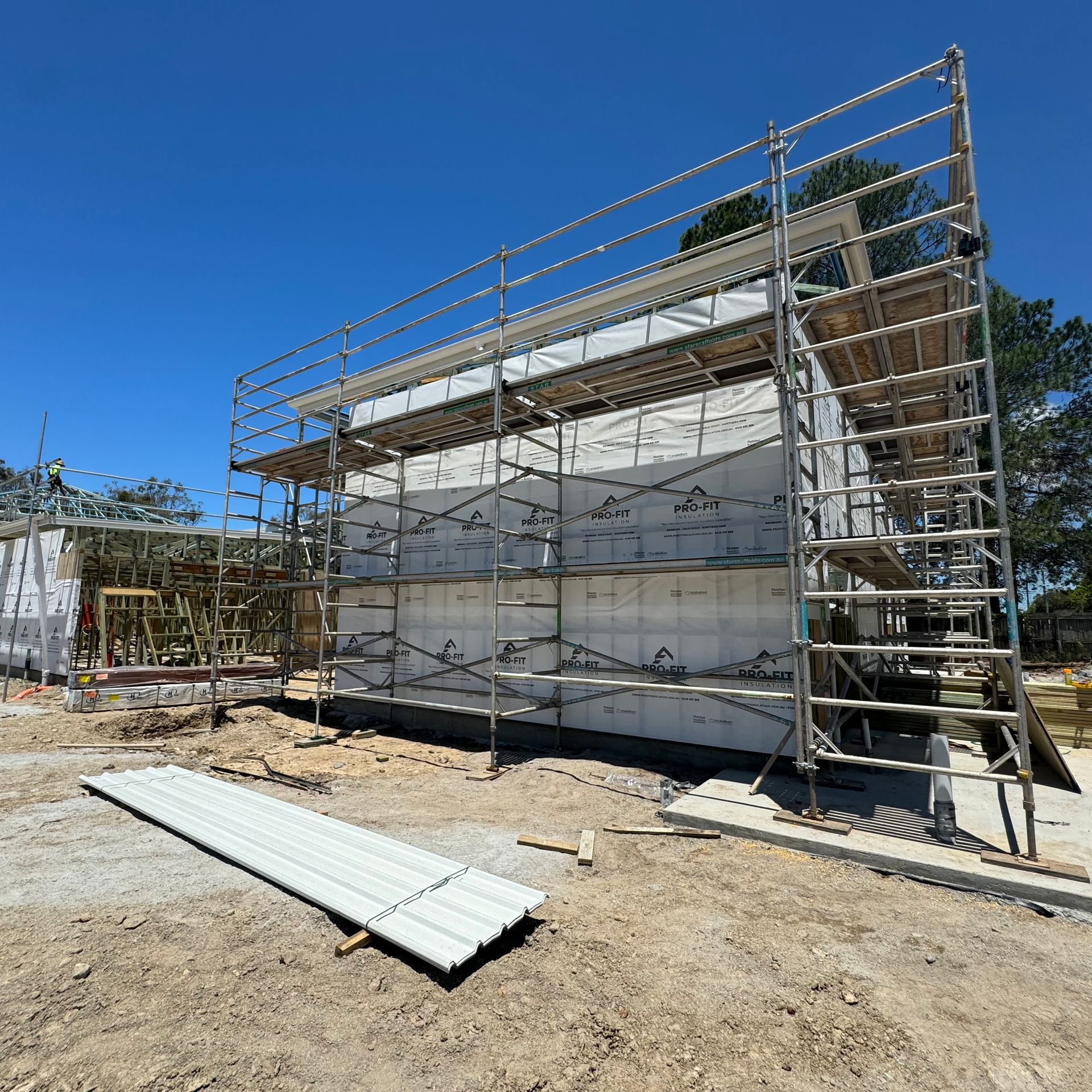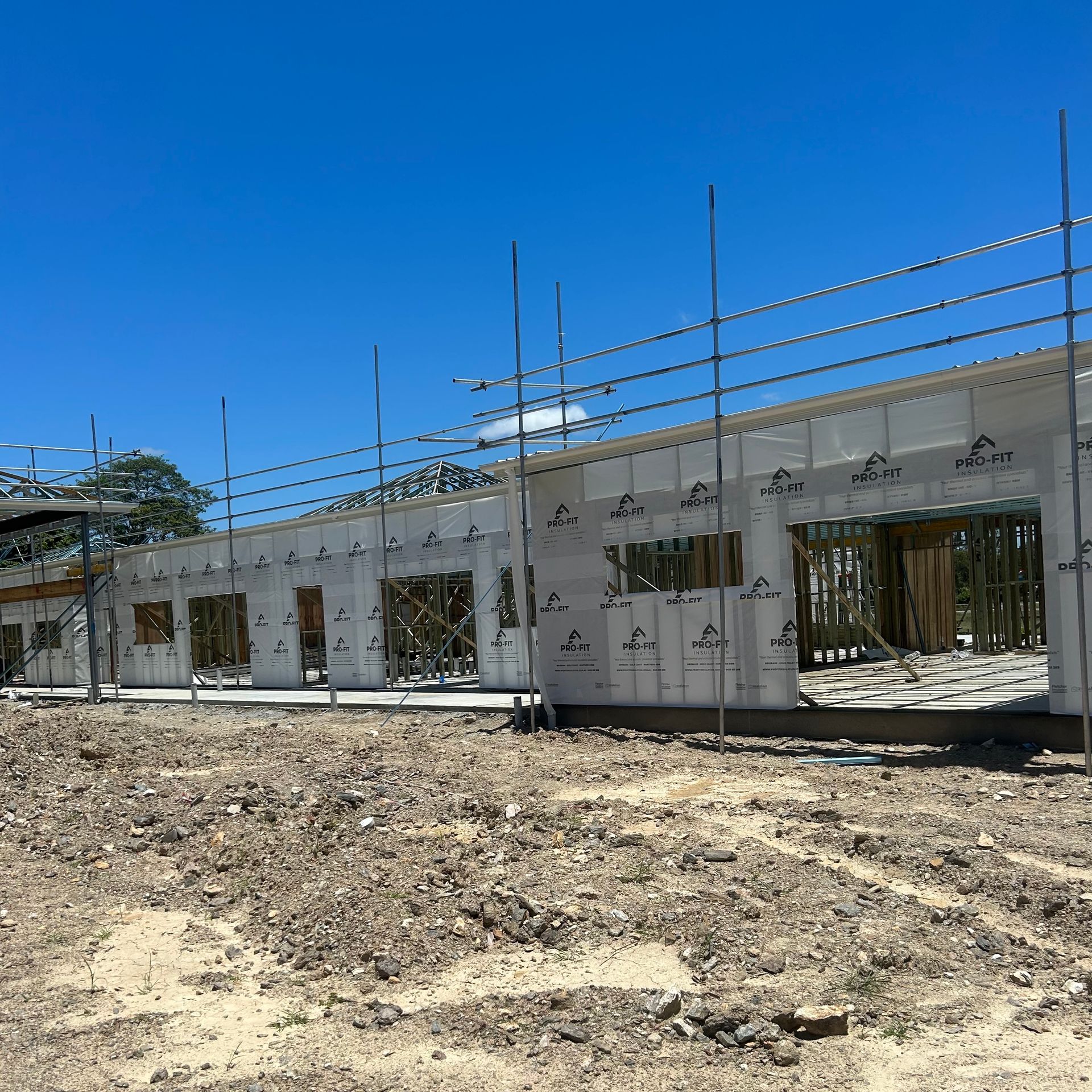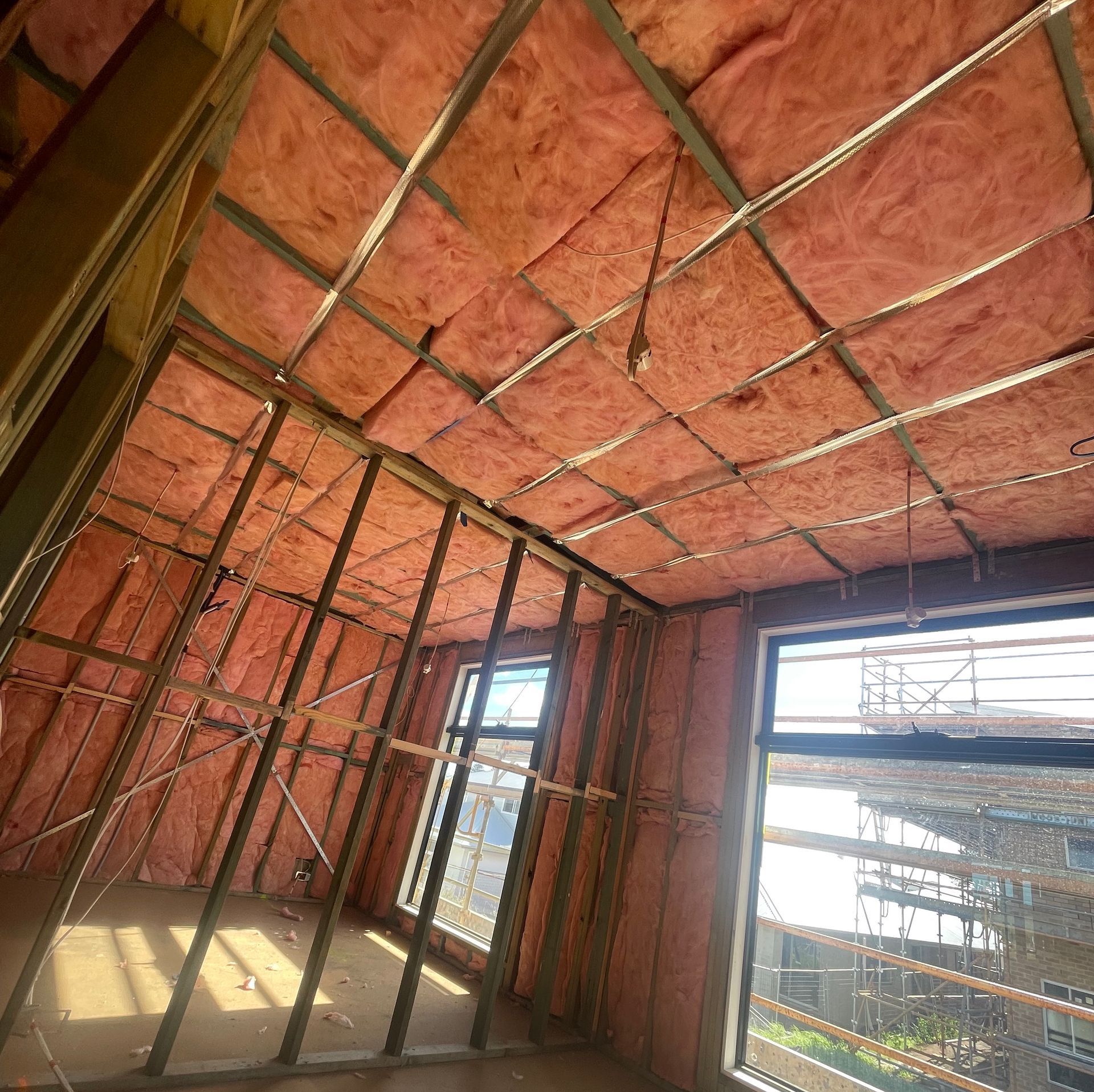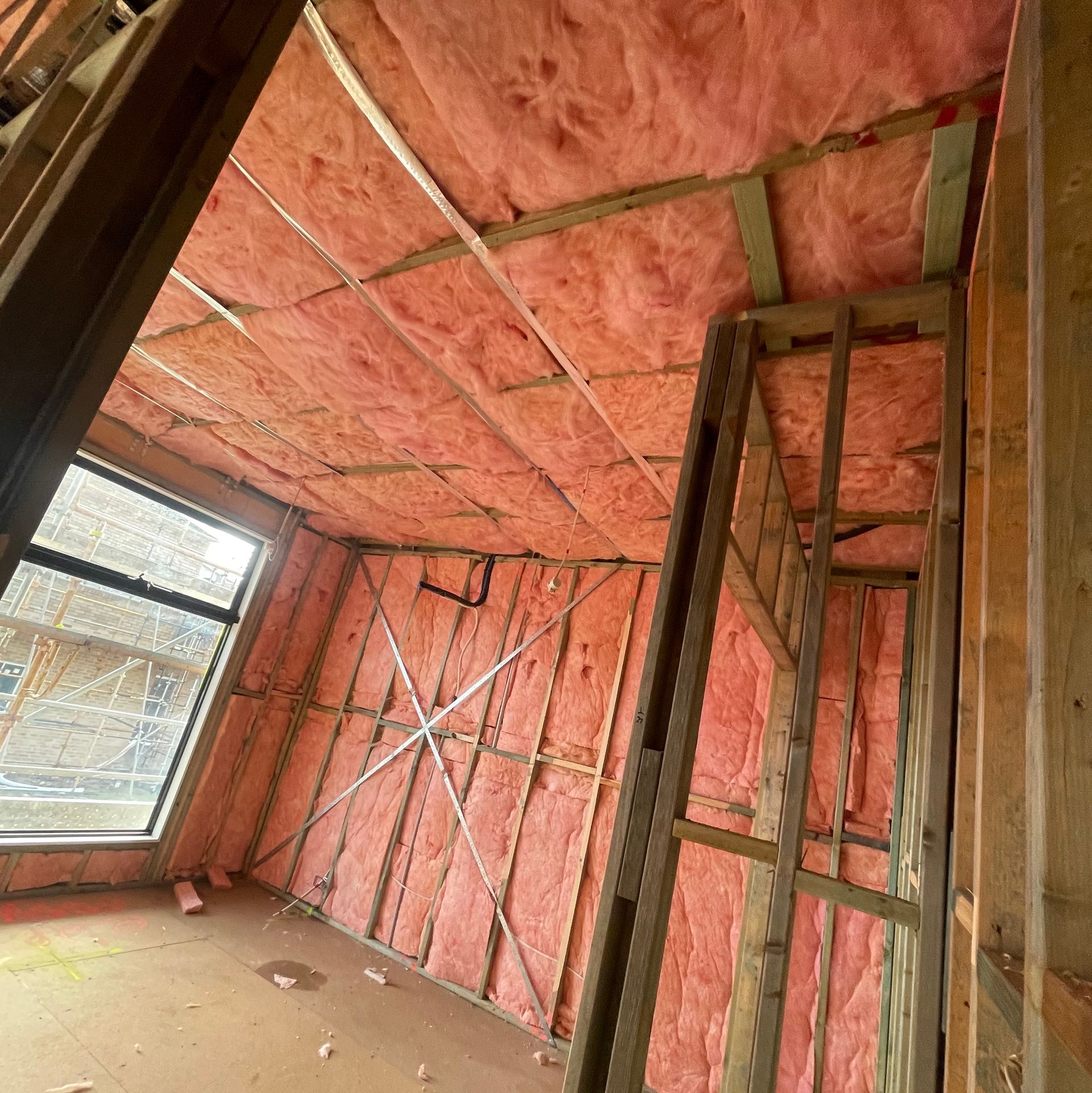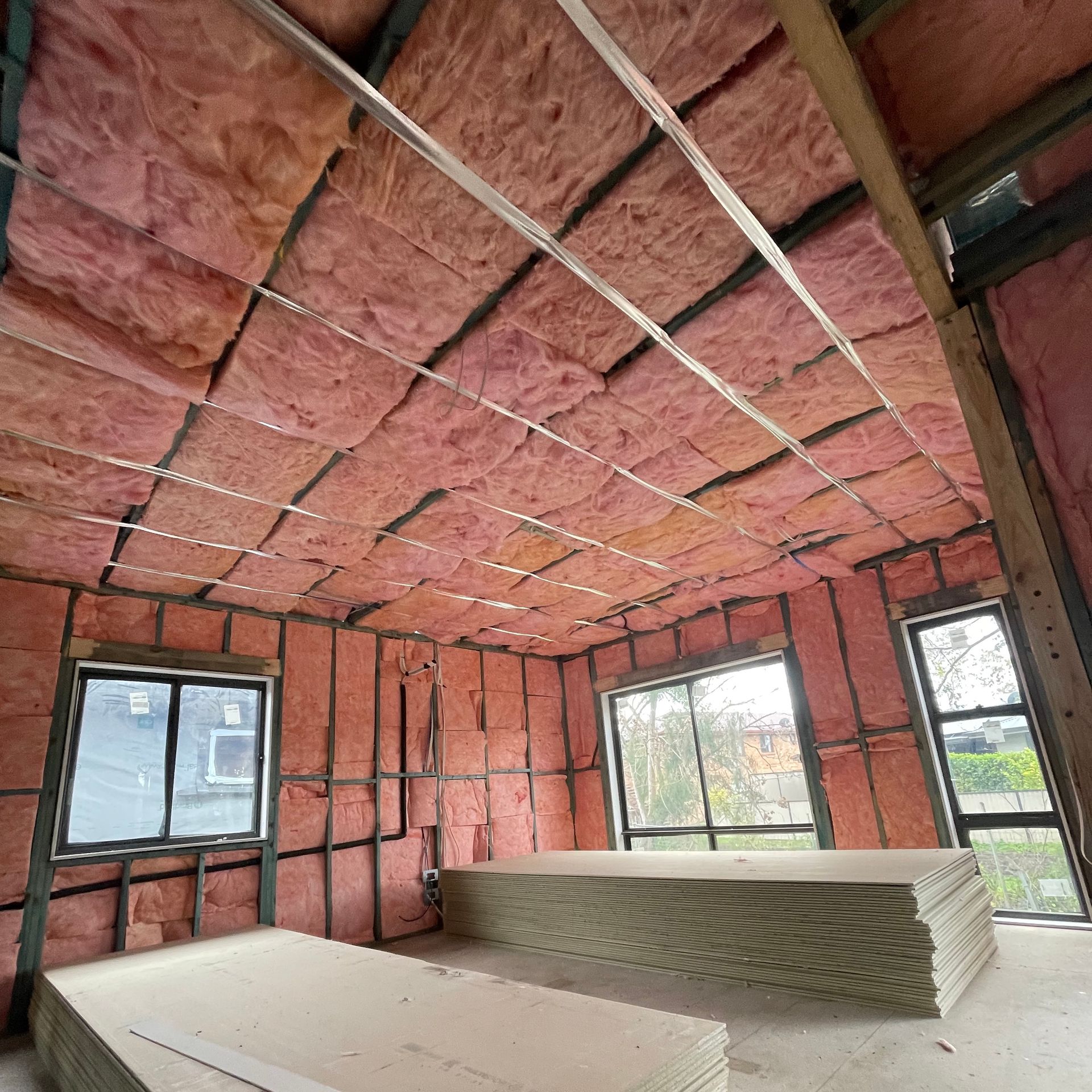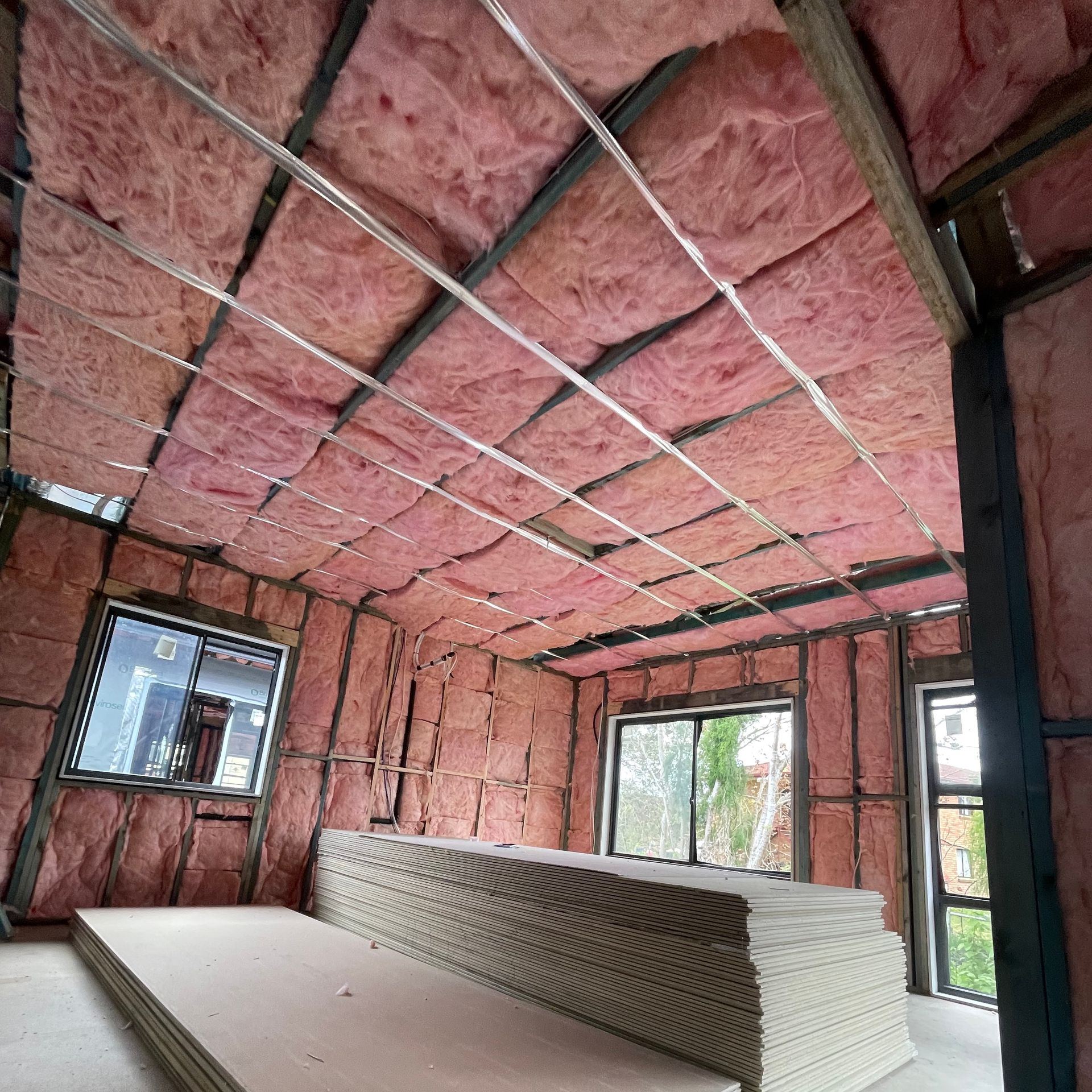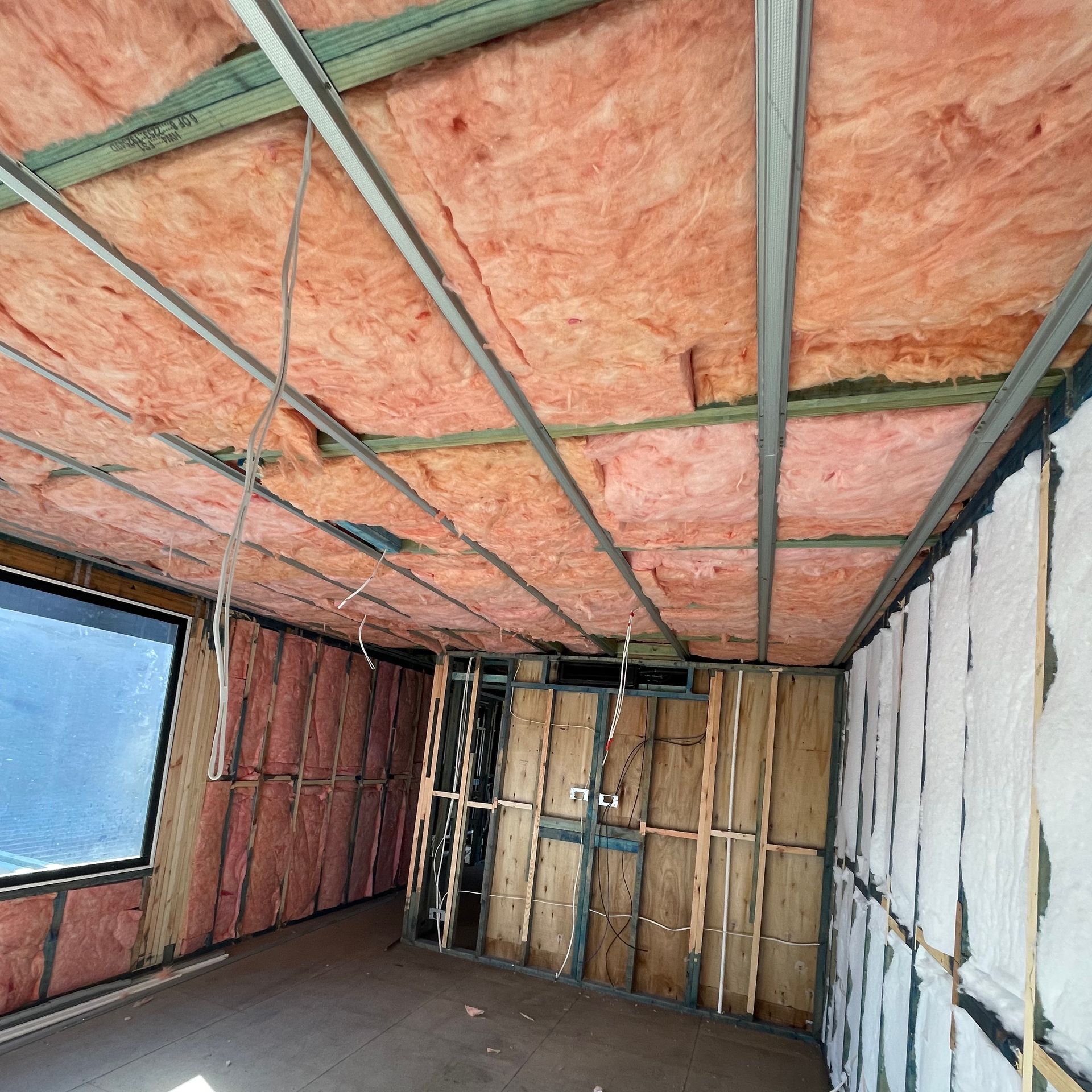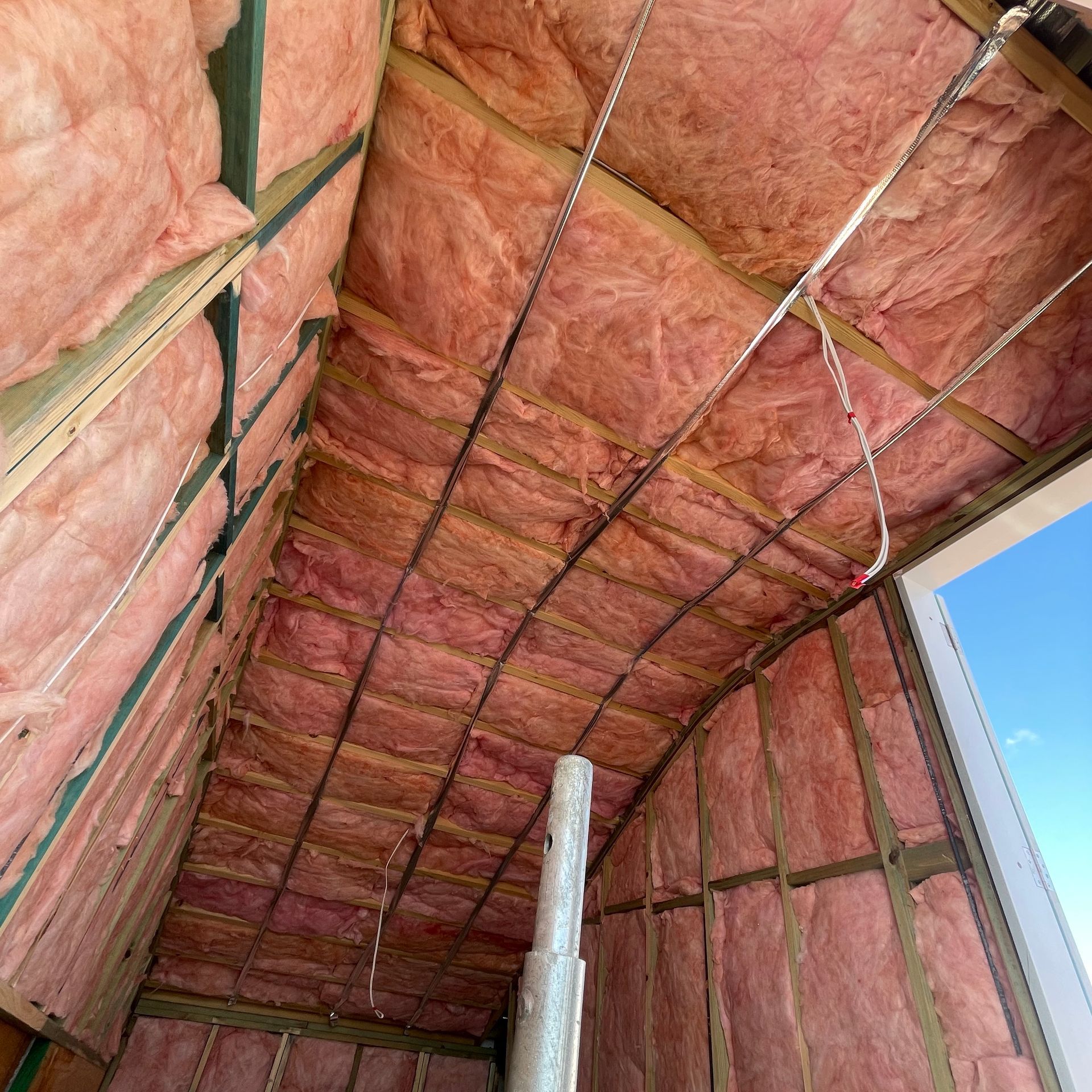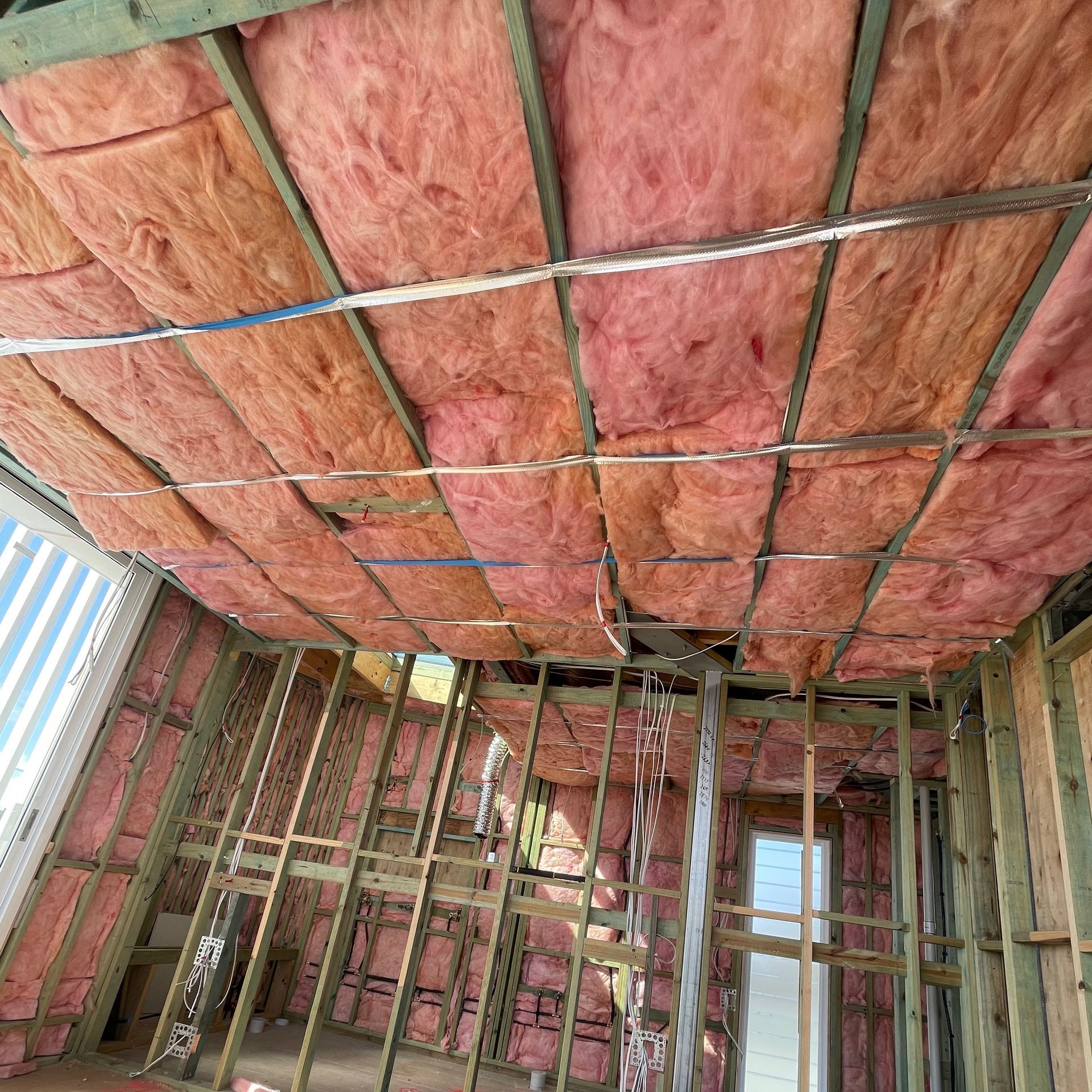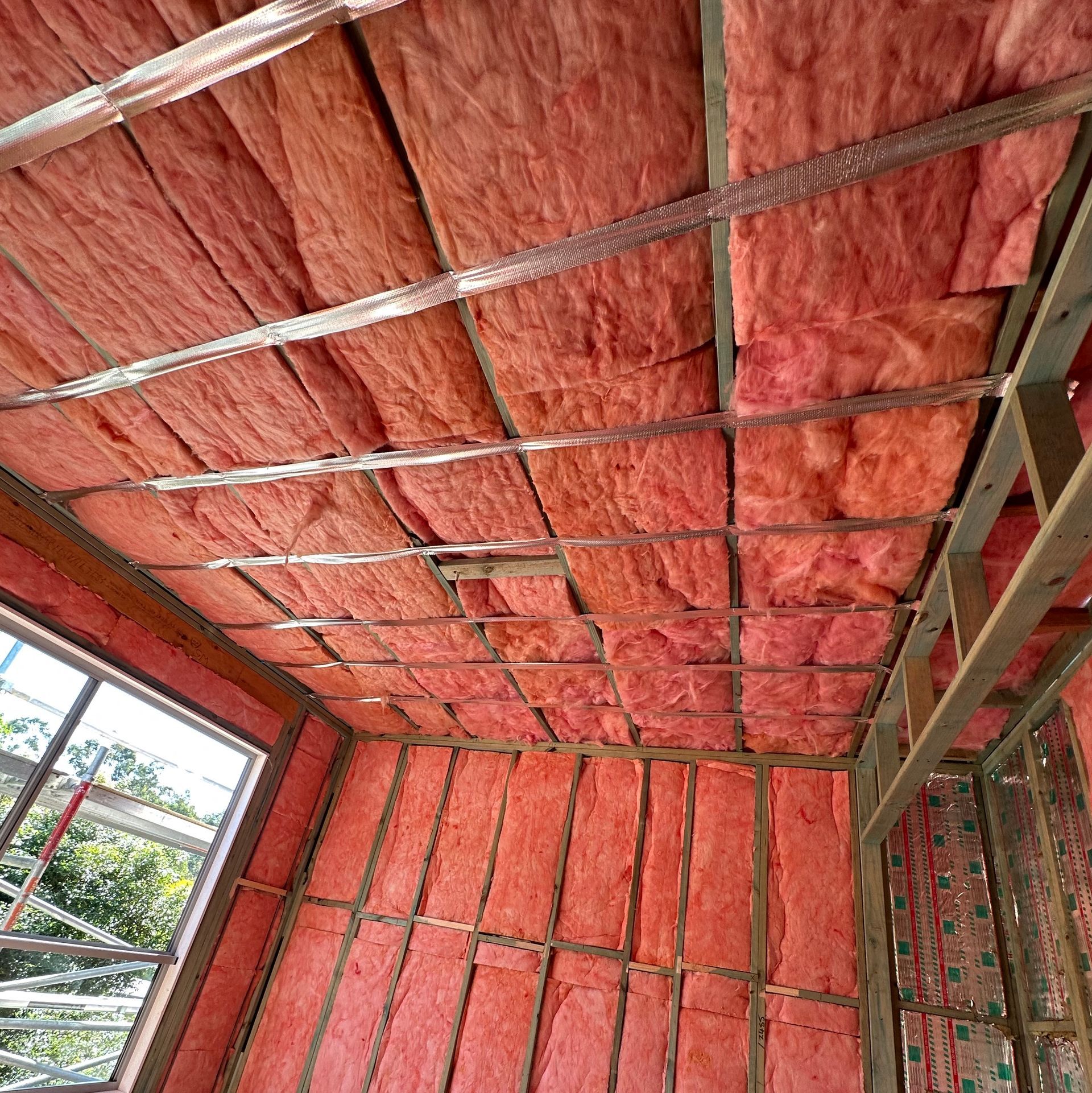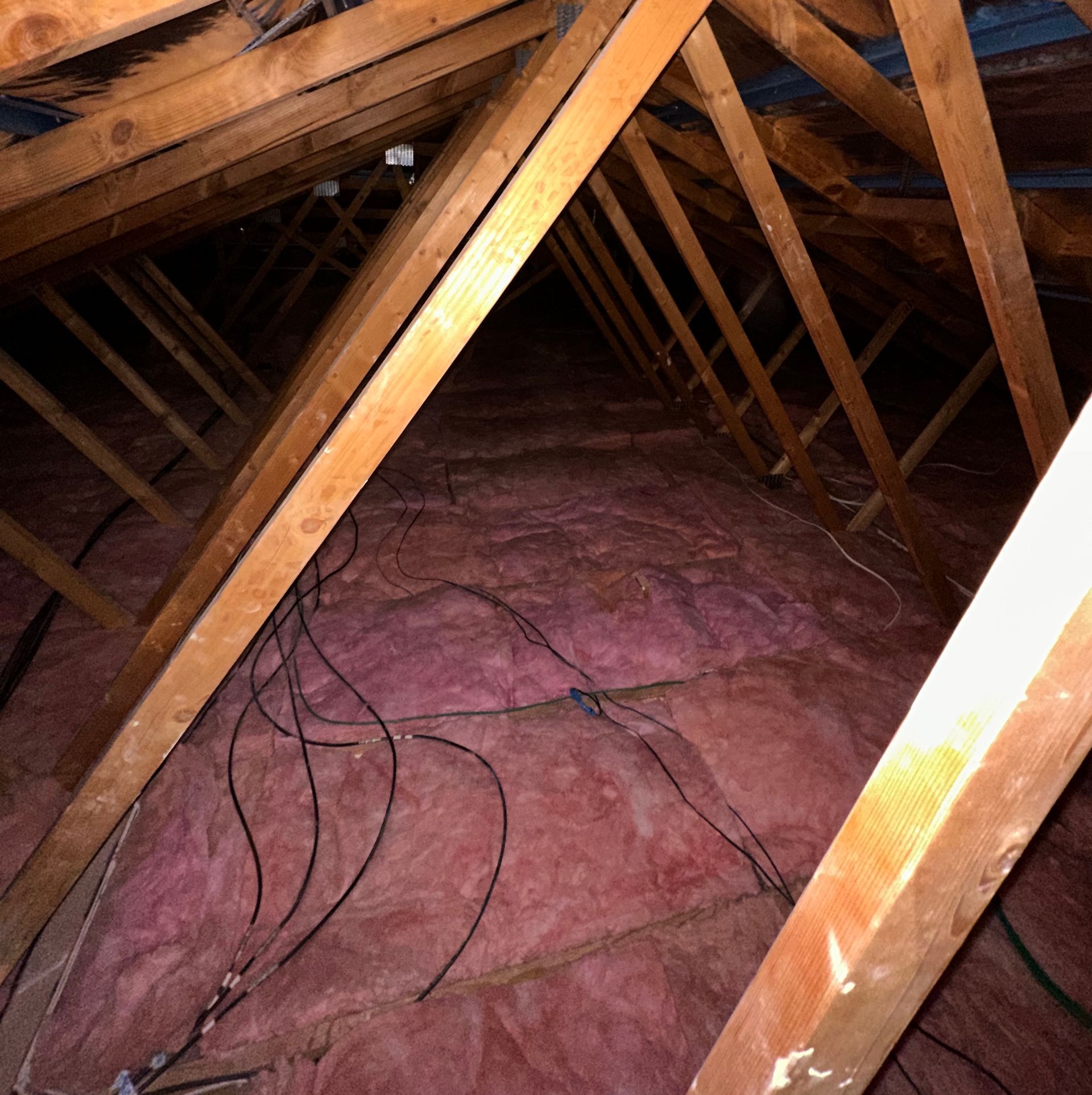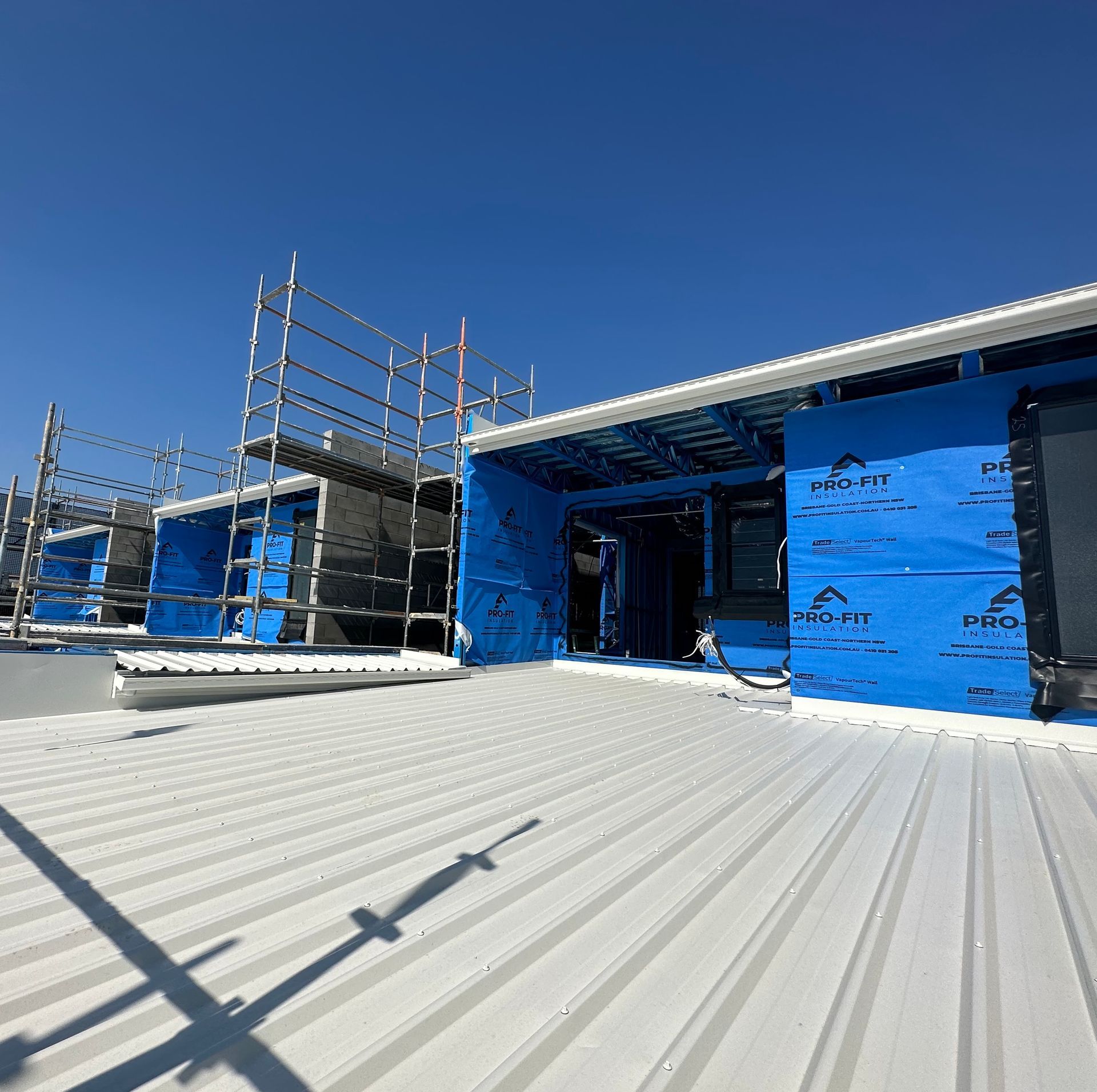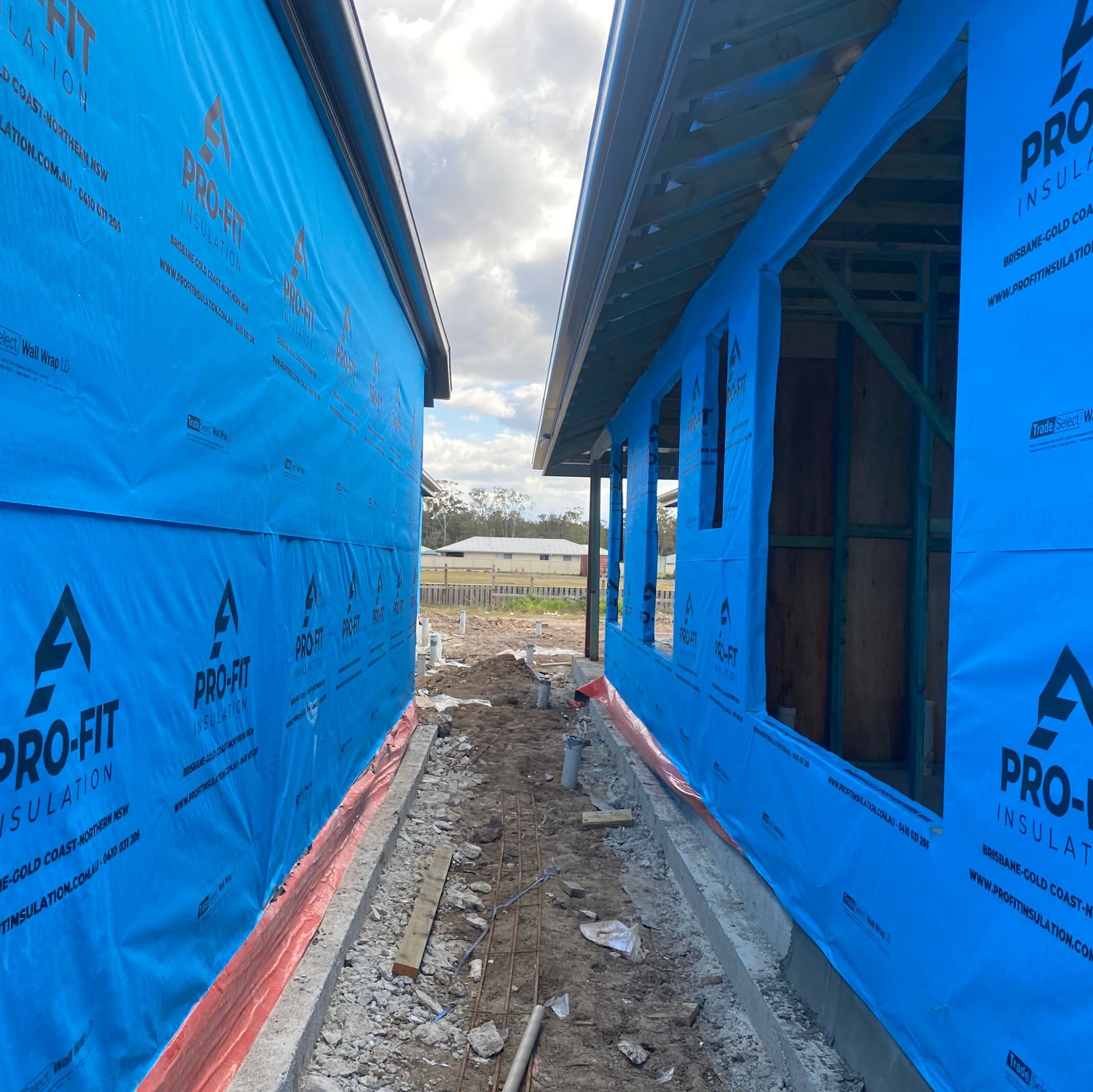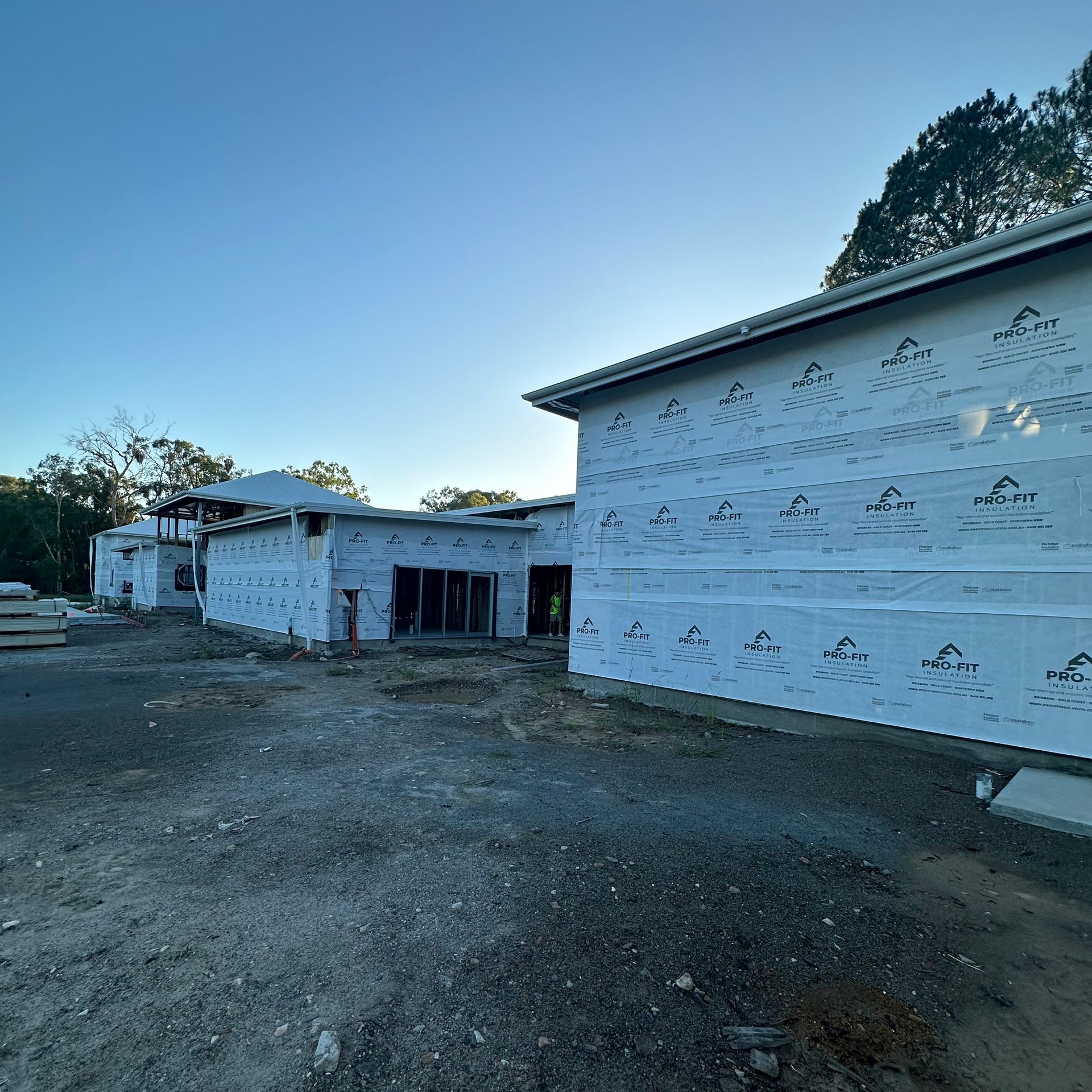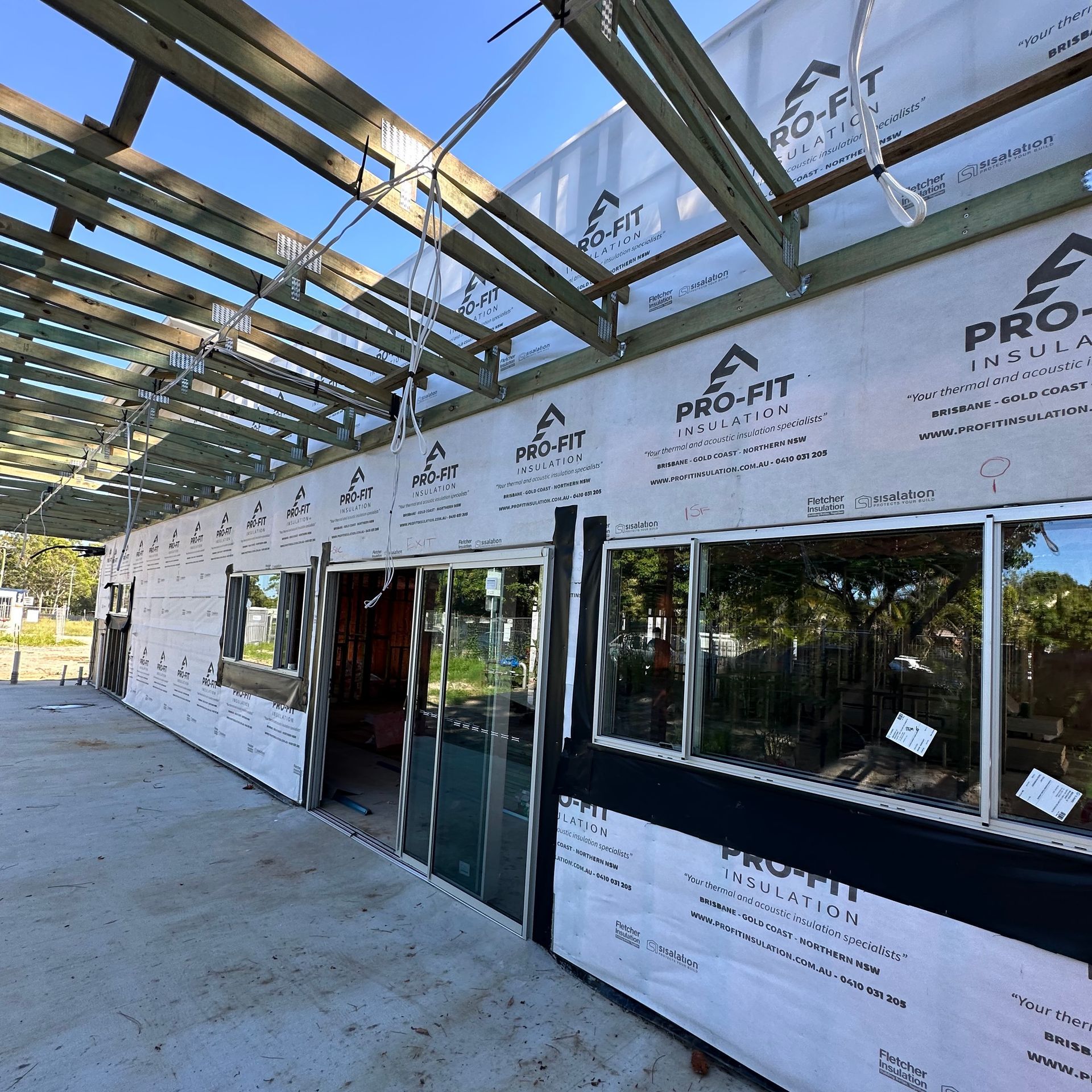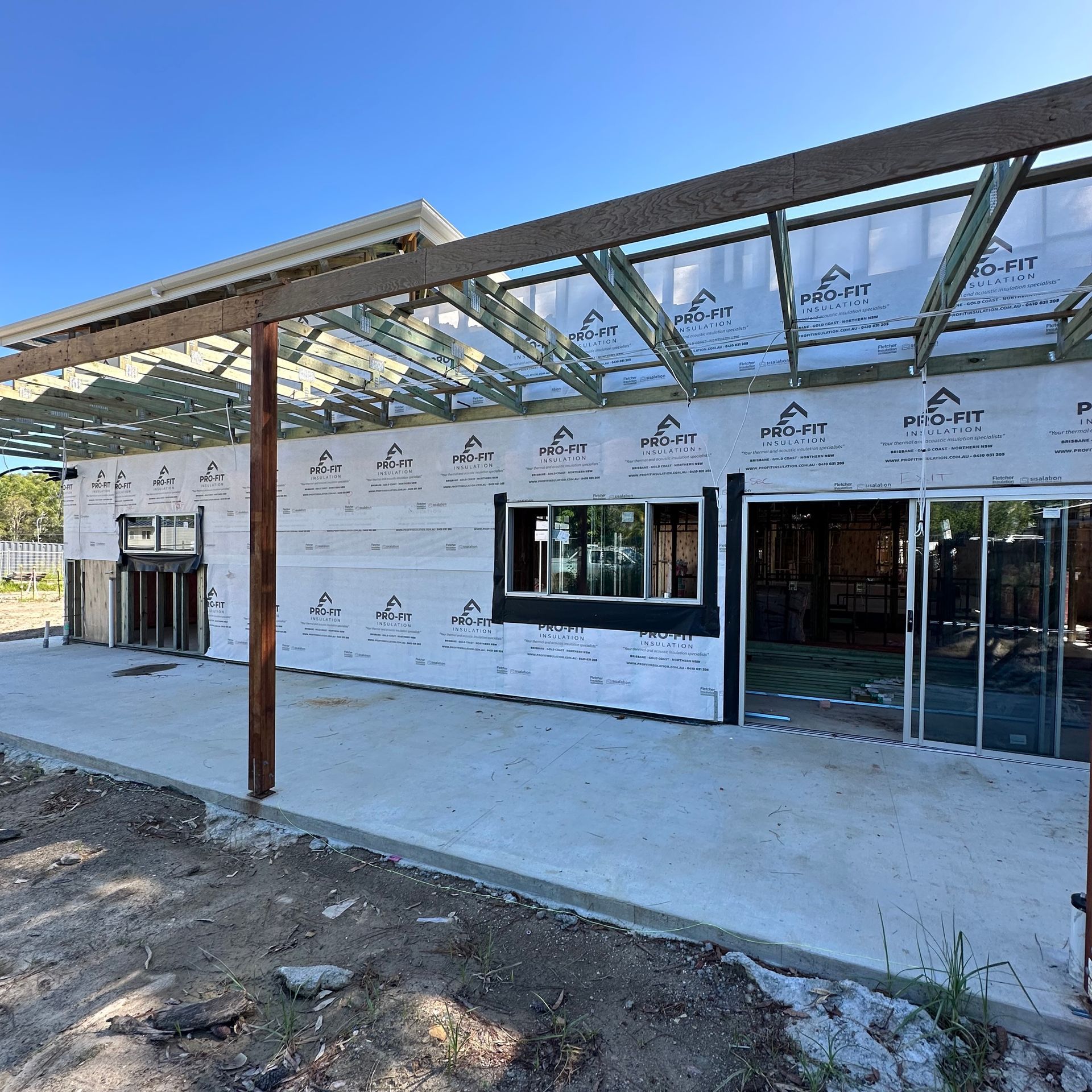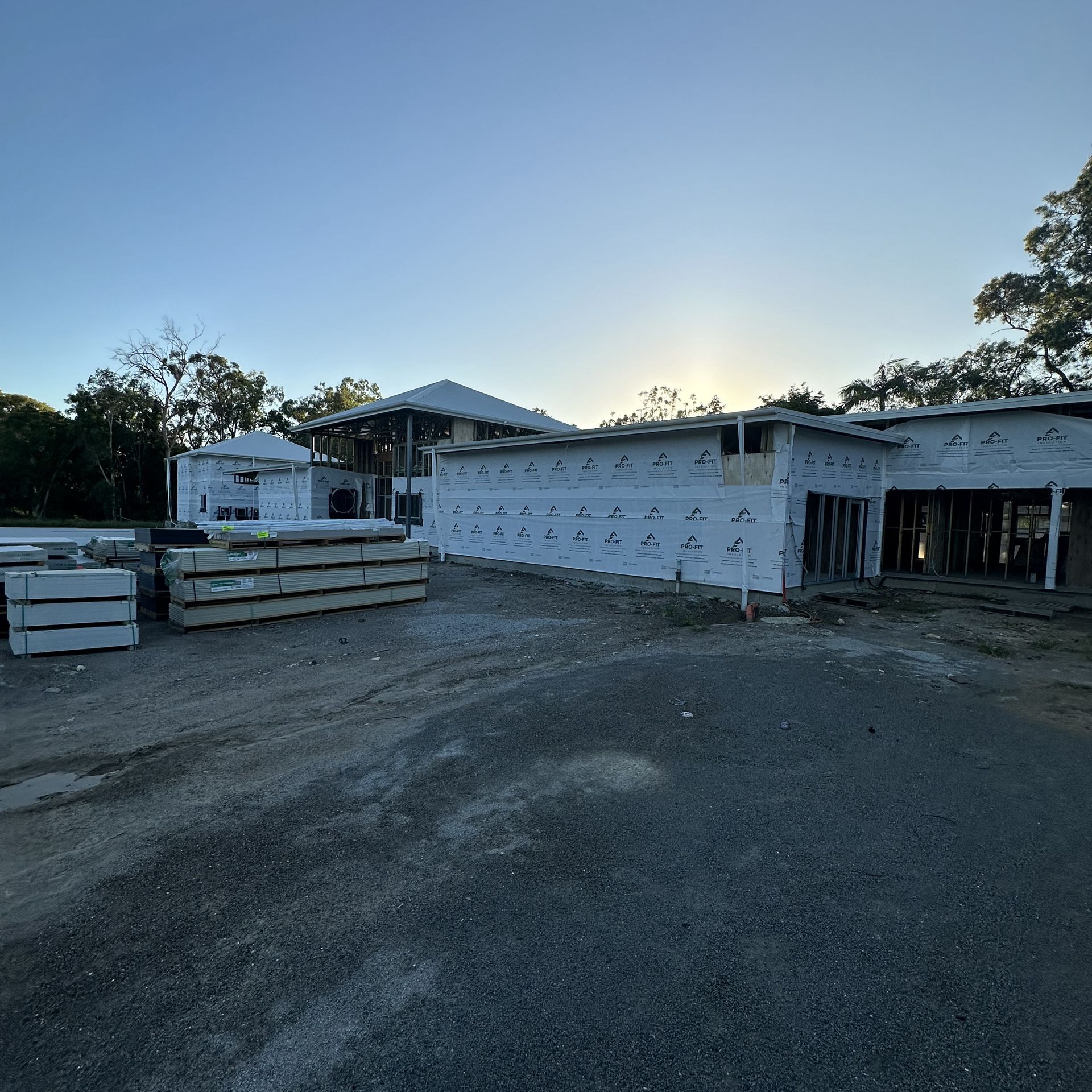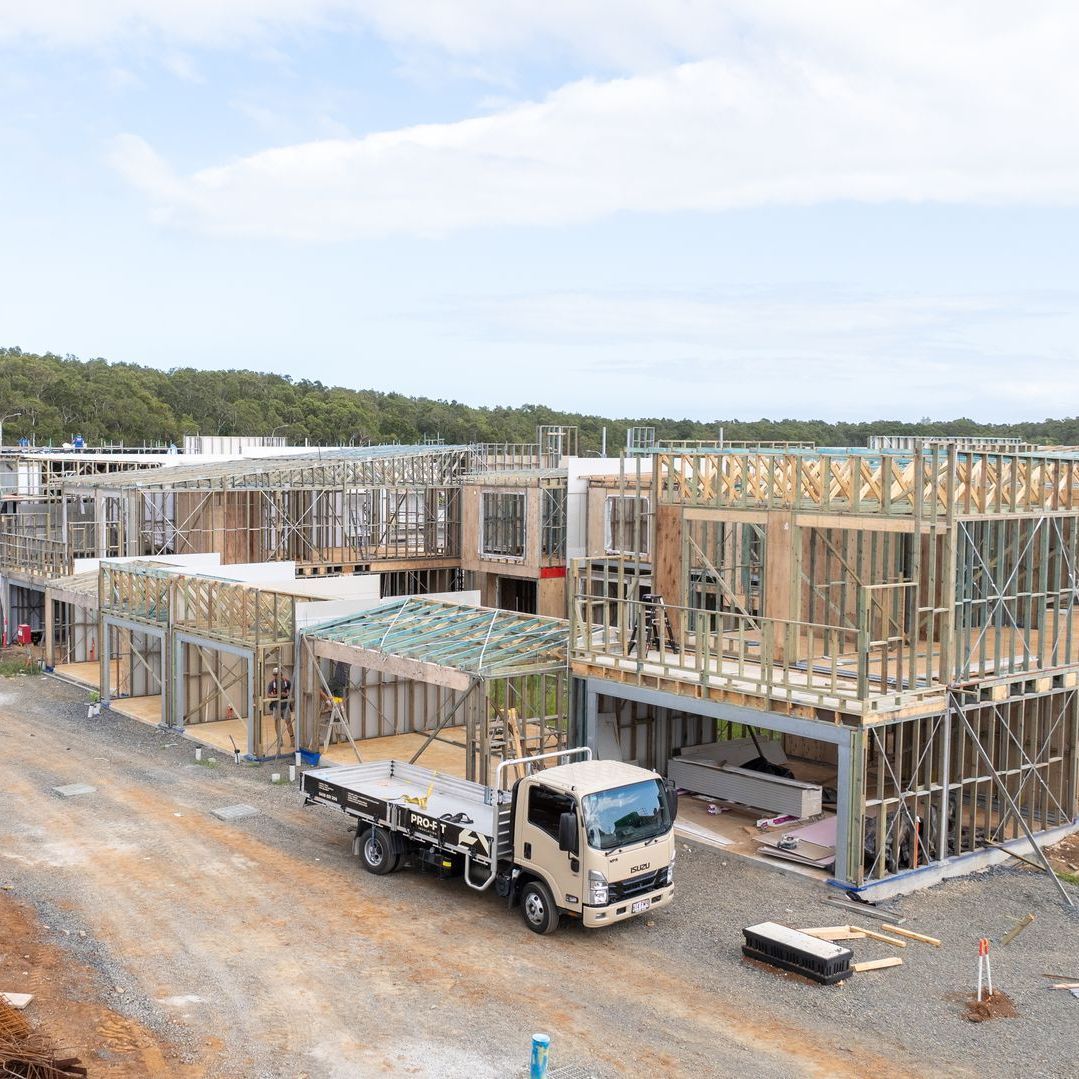Frequently Asked Questions
Why You Should Work With Us
Free Quotes
No obligation, free quotes for all perspective customers
Industry Experienced
15 years experience across all our sectors we work in
Quality Workmanship
100% satisfaction guarantee on all projects
100% Australian Made
All of our insulation materials used manufactured here in Australia
What is the purpose of home insulation, and why is it important?
Home insulation is designed to minimise heat transfer between the interior and exterior of a building. It acts as a barrier, preventing the loss of heat during cold weather and the intrusion of heat during hot weather. Proper insulation is crucial for maintaining a comfortable indoor temperature, reducing energy consumption and lowering utility bills.
Can insulation help with sound control in commercial spaces, and what types of insulation are suitable for this purpose?
Insulation can play a significant role in controlling sound transmission within commercial buildings. Materials such as fibreglass, mineral wool and acoustic foam are commonly used for their sound-absorbing properties. The choice of insulation depends on the specific acoustical requirements of the commercial space.
How does Insulation Work?
Insulation works by slowing the movement of heat from a hot space to a cooler space. This increases the energy efficiency of your home by reducing the amount of heat that escapes from it in the winter (containing the heat and keeping the house warm). It also keeps it from getting too warm in the summer months (retaining the cold air and keeping inside comfortable).
Insulation materials are important for energy conservation because they resist heat flow. There are two insulation types in terms of materials: radiant barriers and reflective insulation systems. Bulk insulation works by trapping pockets of still air within its structure. This air provides a barrier or resistance to heat flow. Reflective insulation works by reflecting large amounts of heat away from itspolished metallic surface and by reducing the radiant heat being emitted from the surface. There are some insulation products that combine bulk and reflective materials and their properties.
How does insulation work to regulate temperature in a home?
Insulation works by slowing down the movement of heat through materials. It typically consists of materials with low thermal conductivity, such as fibreglass, foam board or cellulose. These materials trap pockets of air, inhibiting the transfer of heat through conduction, convection and radiation.
What factors should be considered when selecting insulation materials for commercial buildings?
When choosing insulation materials for commercial applications, factors such as fire resistance, thermal conductivity, moisture resistance and acoustical properties are critical. The specific needs of the commercial space, building codes, and environmental considerations should guide material selection.
What does R value mean?
The efficiency and performance of thermal insulation is measured by the R-value or R-rating (resistance to heat flow through the material.) The higher the R-value, the more the thermal resistance.
A relationship exists between insulation thickness and R-value. There are minimum requirements for R-values depending on the area you live in so make sure you’re choosing the right insulation for your climate. Having the correct R-value of insulation installed will ensure you get the best protection from the weather. At No Gap Insulation, we sell products of several leading brands in Australia with a wide range of thermal resistance.
How does insulation contribute to the energy efficiency of commercial buildings?
Commercial insulation reduces the transfer of heat, minimising the need for excessive heating or cooling. This, in turn, lowers energy consumption, decreases utility costs and contributes to a more sustainable and environmentally friendly operation of commercial buildings.
When is it necessary to remove insulation in attics, and what challenges might be encountered in this process?
Insulation removal in attics is necessary when there is damage, contamination or a desire to upgrade insulation. Challenges may include limited space, access and the need to address any existing ventilation or air sealing issues during the removal process.
How do I address insulation in specific areas like attics, walls and basements?
Different areas of a home have unique insulation requirements. For attics, adding insulation above the ceiling is common. Walls may be insulated during construction or through retrofitting. Basements often benefit from insulation on foundation walls or basement ceilings. Tailoring insulation methods to specific areas maximises energy efficiency.
What are the fire safety considerations when it comes to commercial insulation?
Commercial buildings often have strict fire safety regulations. Insulation materials with fire-resistant properties, such as mineral wool and certain types of foam are commonly used to enhance the fire safety of commercial structures. Adherence to local building codes is essential.
How does insulation address thermal bridging in commercial buildings, and why is it important?
Thermal bridging occurs when there is a direct, conductive connection between the interior and exterior of a building. Proper insulation helps mitigate thermal bridging by creating a continuous thermal barrier. This is essential for maintaining a consistent temperature, reducing energy loss and preventing potential condensation issues.
How is insulation removal typically performed, and what equipment is involved in the process?
Insulation removal involves using specialised equipment such as vacuums, blowers, or cutting tools, depending on the type of insulation. The process may include vacuuming loose-fill insulation, cutting and bagging batt insulation or extracting sprayed foam insulation.
Are there specific insulation requirements for HVAC systems in commercial buildings?
Commercial HVAC systems often require insulation to enhance energy efficiency and thermal performance. Insulating ductwork, pipe and HVAC equipment helps prevent energy losses, reduces condensation and ensures optimal performance of the heating and cooling systems.
Can insulation be recycled after removal, and what are the environmental considerations in the disposal process?
Certain types of insulation, such as fibreglass and cellulose, can be recycled. However, some materials, like asbestos, require specialised disposal procedures to prevent harm to the environment and human health.
What are the different types of insulation materials available for homes?
Common insulation materials include fibreglass, cellulose, foam board, spray foam and mineral wool. Each material has its unique properties, installation methods, and benefits. The choice of insulation material depends on factors such as budget, climate and the specific area of the home being insulated.
What is the role of vapour barriers in commercial insulation, and when are they necessary?
Vapour barriers are crucial components in commercial insulation systems, helping control the movement of moisture within the building envelope. They are especially important in preventing condensation within walls and roofs, which can lead to structural damage and reduced insulation effectiveness.
Can existing commercial buildings be retrofitted with insulation, and what challenges might be involved?
Retrofitting insulation in existing commercial buildings is available, but it comes with challenges such as limited access, different construction methods and potential disruptions to ongoing business operations. A thorough assessment and careful planning is essential to overcome these challenges and achieve effective retrofitting.
What are the potential health risks associated with old or damaged insulation, and why is removal important in such cases?
Old or damaged insulation can harbour allergens, dust, mould or asbestos, posing health risks to occupants. Removal is important to eliminate these hazards and create a healthier indoor environment.
Our Process
1. Consultation & Planning
We meet and have a initial consultation and overview of job scope
2. Measure & Quote
Confirm requirements & materials, measure up, provide detailed quotation
3. Confirm & Schedule
Schedule suitable time frame to commence scope of work
4. Complete Installation
Complete installation as per requirements achieving 100% satisfaction for our client
Recent Projects
Locations We Service
Supplying and Installing Australia's Best Insulation Brands









